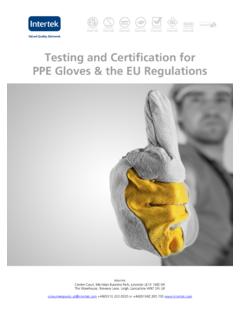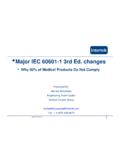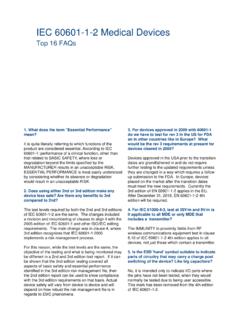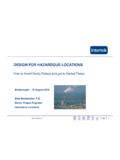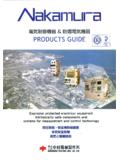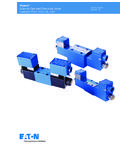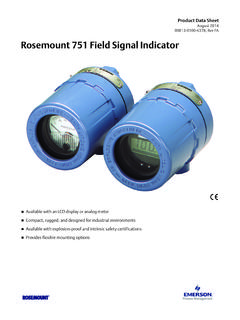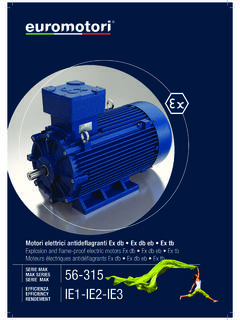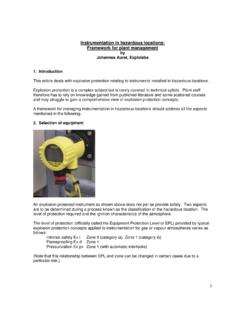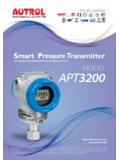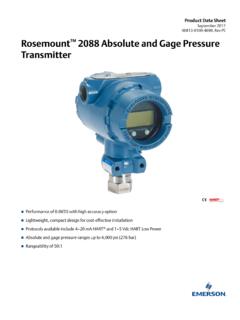Transcription of Explosionproof v Flameproof - Intertek
1 Intertek Deeside Lane, Chester, CH1 6DD UK 01244 882590 Explosionproof v Flameproof : Understanding the differences between ANSI/UL1203 and IEC 60079-1 explosion - proof v Flameproof : Difference between ANSI/UL1203 and IEC 60079-1 1 Contents Contents .. 1 1 Introduction to ANSI/UL1203 .. 2 Introduction to IEC 60079-1 .. 2 The differences .. 2 3 5 Introduction As the world gets smaller and opportunities to market your product globally get bigger, the effort required to get through the global compliance hurdles seems to be overly complex.
2 The IECEx scheme was introduced as a way forward for the simplification of global market access. Unfortunately, local rules still exist, and in some instances technical and standardisation hurdles are still in place. For hazardous area equipment manufacturers one of those technical hurdles is the fairly minor, yet quite important and detailed differences between the North American standard ANSI/UL1203 and the International standard IEC 60079-1. In many cases this would cause a manufacturer to use the services of one test/certification body for their IEC and ATEX approvals, and another for their North American approvals.
3 If the differences are known and understood at the outset, and a suitable test plan formulated, then this can be avoided and a single test/certification body can be used to save costs, but more importantly, time to market. This whitepaper aims to explain the differences between ANSI/UL1203, explosion - proof and Dust-Ignition- proof Electrical Equipment for Use in Hazardous (Classified) Locations and IEC 60079-1, Equipment Protection by Flameproof Enclosures "d". The terms explosion proof and Flameproof have the same meaning in that they are constructed in such a way that an internal ignition of a flammable atmosphere will not be transmitted outside of the enclosure and thereby preventing the ignition of surrounding flammables.
4 Flameproof is a preferred method of protection when the electrical equipment may potentially have high energy arcing or sparking components in normal operation and therefore the formation of an explosion when in a hazardous atmosphere is not easily avoided. explosion - proof v Flameproof : Difference between ANSI/UL1203 and IEC 60079-1 2 Introduction to ANSI/UL1203 ANSI/UL1203 covers the North American requirements of explosion proof and dust ignition proof electrical equipment for installation in hazardous (classified) locations, Class I, Division 1, Groups A, B, C and D, and class II, Division 1, Groups E, F, and G, in accordance with the National Electrical Code (NEC), NFPA 70.
5 The requirements outlined in ANSI/UL1203 are also suitable for Class 1, Zone 1 Gas Groups IIA, IIB and IIC and Zone 20, 21 and 22 dust locations in accordance with the National Electrical Code (NEC) 505. Conformance to this standard is required when the product is intended to be situated in North America in an area defined under the Class and Division system. Introduction to IEC 60079-1 This part of the IEC 60079 series of standards contains specific requirements for the construction and testing of electrical equipment with the type of protection Flameproof enclosure d , intended for use in explosive gas atmospheres for Group I (mining) or Group II (non-mining) Gas Group IIA, IIB and IIC.
6 The requirements of this standard are supplemented by IEC 60079-0 General requirements for all electrical apparatus . The differences General ANSI/UL1203 covers both Gas and Dust requirements whereas IEC 60079-1 is Gas/Vapour specific. Gas grouping is different for Class and Division in ANSI/UL1203. For Class and Division, where Division A is the most onerous whereas in IEC 60079-1 Group IIC is the most onerous. Most notably Acetylene (North America Group A) and Hydrogen (North America Group B) are separated out in ANSI/UL1203 whereas IEC 60079-1 groups them together as Group IIC. Constructional ANSI/UL1203 has ingress and weatherproofing requirements for enclosures situated outdoors whereas IEC 60079-1 has no implicit requirement for IP rating, or similar.
7 explosion - proof v Flameproof : Difference between ANSI/UL1203 and IEC 60079-1 3 There are minimum requirements for enclosure wall thicknesses in ANSI/UL1203 whereas IEC 60079-1 has none (except for around blind holes and fasteners). Requirements for gaskets are more detailed in ANSI/UL1203 including some testing required. There are slightly different requirements for width of joints, gaps and holes interrupting flamepaths etc in the two standards. The particular difference depends on factors such as flamepath type, gas group (Division), internal volume etc. ANSI/UL1203 covers requirements for fittings, plugs and valves more explicitly than IEC 60079-1.
8 Extensive requirements for conduit cabling systems in ANSI/UL1203 as this is the preferred method of electrical installations. Requirements also exist in ANSI/UL1203 for rust protection of ferrous metals. There are some extra performance tests required in ANSI/UL1203 and also non metallic enclosure requirements are more stringent. Tests Additional test requirements for evaluation of internal fuses is called up in ANSI/UL1203, rupture etc. In ANSI/UL1203 when lengths of conduit are required to be connected to the equipment for explosion tests then these lengths are to be evaluated as part of the test apparatus.
9 This is not specifically required in IEC 60079-1. Reference pressure and flame transmission testing is permitted simultaneously in ANSI/UL1203 whereas they are separate tests in IEC 60079-1. Gas concentrations for ANSI/UL1203 are less strictly defined for reference pressure testing. However, flame transmission gas mixtures are pretty much the same. The sample must meet 4 x explosion pressure for 10 seconds when testing per ANSI/UL1203, and there are no times relaxations (with manufacturer performed routine pressure testing on all products built) as permitted by IEC 60079-1. During flame transmission testing, when testing with Gas groups containing Acetylene and Hydrogen, ANSI/UL1203 requires the width of all flamepath joints to be reduced to 75% of the minimum design width.
10 Threads are reduced to 75% engagement regardless of fit. IEC 60079-1 requires no reduction in thread explosion - proof v Flameproof : Difference between ANSI/UL1203 and IEC 60079-1 4engagement provided the threaded joint complies with ISO 965 fit medium or better. For cylindrical threads with larger tolerances the thread engagement is reduced to 66% engagement. Also in IEC60079-1 the flamepath widths of non threaded joints on the test specimen shall not be greater than 115% of the minimum width stated by the manufacturer. It is important to note the differences in the sample requirements for equipment incorporating a flanged (flat) or labyrinth flamepaths.





